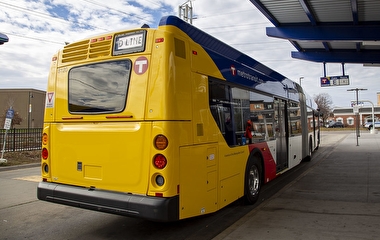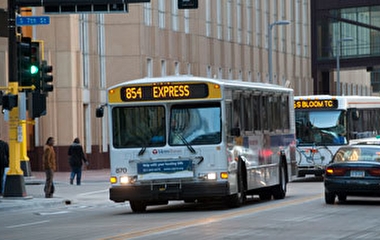
Groundbreaking transportation research from the Accessibility Observatory at the University of Minnesota is entering its second phase with a new multiyear national pooled-fund study to measure access to destinations, such as jobs, education, and health care.
“Measuring access to destinations gives us the clearest possible view of how well our transportation systems connect travelers with important destinations,” says Observatory director Andrew Owen. “It can also reveal how transportation and land use planning work together to set the stage for future growth and sustainability. Comprehensive accessibility metrics can help planners make wise, cost-effective transportation system investments that will best serve public needs as they evolve through an increasingly uncertain future.”
The first phase of the National Accessibility Evaluation, covering 2014–2019, established a new national data source for multimodal job access, and identified national and local trends in how easily workers can reach jobs by different transportation modes. Large, auto-oriented metropolitan areas saw congestion play an increasingly significant role in limiting the job access, by auto, of local workers. The project also identified significant changes in job access by transit and biking for workers in areas that made investments in those transportation modes. The Access Across America series of annual reports tracks these trends for the nation’s 50 largest metropolitan areas.
The second phase of the study, covering 2020–2024, will continue annual updates of national job access data and expand with new destination types to include education and health care. In addition, the Observatory will provide study partners support with integrating accessibility data and concepts into transportation planning and performance management.
Annual nationwide data from the National Accessibility Evaluation is used to guide key transportation and land-use policy decisions. State departments of transportation, metropolitan planning organizations and transit agencies can apply the data to performance goals related to congestion, reliability and sustainability. In addition, detailed accessibility evaluation can help in selecting between project alternatives and prioritizing investments.
The National Accessibility Evaluation was initiated by the Minnesota Department of Transportation (MnDOT) and supported by partners including the Federal Highway Administration and 14 additional state transportation departments. The University of Minnesota’s Accessibility Observatory is a leading national resource for the development and application of accessibility-based transportation system evaluation.
The Observatory is a program of the Center for Transportation Studies, a national leader in fostering innovation in transportation. All of the Access Across America research reports are available on the Accessibility Observatory website.


